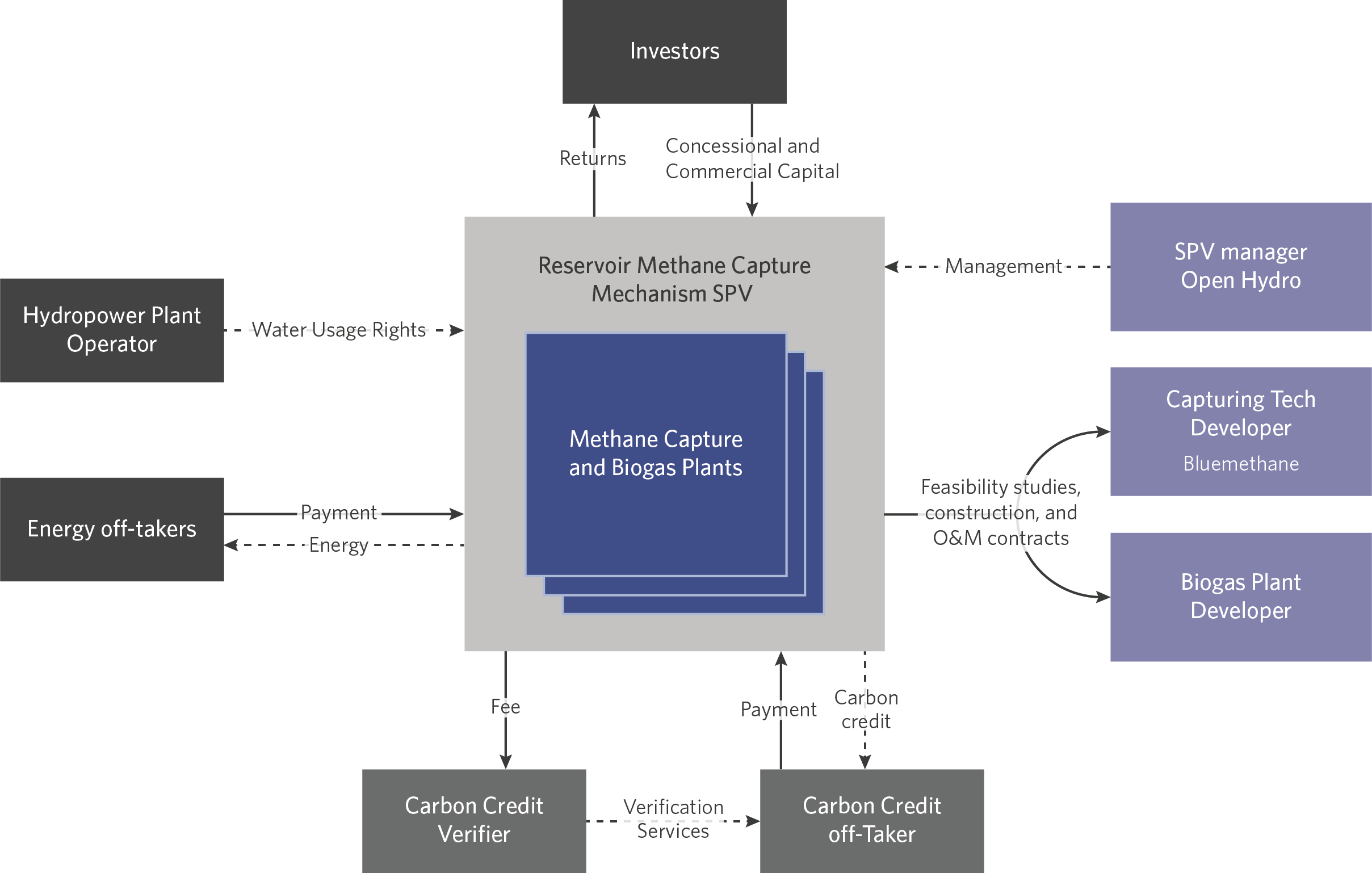This publication is CPI’s analysis of Reservoir Methane Capture Mechanism, an innovative climate finance instrument endorsed by The Global Innovation Lab for Climate Finance (the Lab). CPI serves as the Lab’s Secretariat. Each instrument endorsed by the Lab is rigorously analyzed by our research teams. High-level findings of this research are published on each instrument, so that others may leverage this analysis to further their own climate finance innovation.
ABOUT
Methane is responsible for nearly half of net global warming to date. However, finance for methane emissions reduction accounts for less than 2% of international climate finance. A ten-fold increase is necessary to meet the more than USD 110 billion needed to reduce methane emissions on a global scale.
Fifty-one billion tons of greenhouse gases reach the atmosphere annually, of which three billion tons of CO2e come from methane escaping from water, including hydropower reservoirs. Although methane capture technologies are available to harvest methane from water, the lack of proper financing mechanisms prevents them from scaling. Considering the climate crisis, a financial solution that tackles methane abatement amidst an increase in hydropower generation is vital.
Reservoir Methane Capture Mechanism is the first-of-its-kind servitization structure with blended funding to unlock investments into emerging methane capture technology.
INNOVATION
Reservoir Methane Capture Mechanism is the first structure to mainstream and commercialize methane capture technologies on hydropower plants. The mechanism proposes a methane capture-as-service approach that displaces ownership from economic benefits, enabling hydropower operators to adopt the systems without incurring the risks associated with new technology outside their business scope. The instrument provides short-term, stable, and tangible revenues using methane captured from hydropower reservoirs to generate carbon credits and fuel biogas generators. As a result, it reduces emissions from a previously unaddressed carbon source.
IMPACT
Hydropower in Brazil is the primary source of electricity. Although regarded as clean energy with low-carbon emissions, hydropower generation emits methane that can now be captured and utilized. The mechanism helps hydropower companies become even more sustainable and meet their emissions targets. The pilot will be comprised of five sets of methane and biogas plants. At scale, the instrument will avoid 6.8 million tons of CO2e emissions per year, equivalent to 1.5 million automobiles or 3.7 million cattle heads.
DESIGN

The instrument is centered around a special purpose vehicle (SPV), managed by Open Hydro, which owns both the methane capture and biogas plants and absorbs potential risks. Bluemethane will develop the methane capture plant, a local developer will be responsible for the biogas plant, and the hydropower plant operator will provide water usage rights.
The plant captures methane through a closed-circuit hydro cyclone-like tank. This captured methane is then fed into a biogas plant, generating energy to be sold in the Brazilian market under the distributed energy framework. Revenues based on carbon credits sales will rely on the proper measurement and monitoring of these assets by a third-party verifier.

